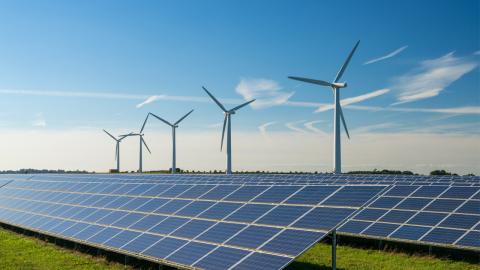Uptime Institute’s data on power usage effectiveness (PUE) is a testament to the progress the data center industry has made in energy efficiency over the past 10 years. However, global average PUEs have been largely stalling at close to 1.6 since…
filters
Explore All Topics
How is the Ukraine conflict affecting digital infrastructure and the data sector? In response to multiple queries, Uptime Institute Intelligence has identified six main areas where operators and customers of digital infrastructure are experiencing…
This series of Uptime Intelligence reports guides managers and responsible operators through the complex set of issues involved in creating an environmental sustainability strategy for data centers and associated digital infrastructure.
A service level agreement (SLA) is a contract between a cloud provider and a user. The SLA describes the provider’s minimum level of service, specified by performance metrics, and the compensation due to the user should the provider fail to deliver…
In general, the prices of cloud services either remain level or decrease. There are occasional price increases, but these are typically restricted to specific features; blanket price increases across product families are rare.Price cuts are often…
Conditions will soon be ripe for widespread use of direct liquid cooling (DLC) — a collection of techniques that uses fluid to remove heat from IT electronics instead of air — and it may even become essential.Currently, air cooling is still dominant…
Cloud providers need to deliver the newest capability to stay relevant. Few enterprises will accept working with outdated technology just because it's consumable as a cloud service. However, existing cloud instances don’t migrate automatically…
Pressed by a sense of urgency among scientists and the wider public, and by governments and investors who must fulfil promises made at COP (Conference of the Parties) summits, major businesses are facing ever more stringent sustainability reporting…
The cloud model was designed to be simple and nimble. Simple and nimble doesn’t necessarily mean fit for purpose. Over the past decade, new layers of capability have been added to cloud to address its shortcomings. While this has created…
The global data center industry describes its own sustainability performance as average, compared with other industries — and most think efforts are not substantially reducing environmental impacts.A recent Uptime Institute global survey of over 400…
The COVID-19 pandemic has stressed supply chains globally, resulting in higher prices and increased delivery times for many components. Shortages and delays are likely to persist into 2022 and beyond as demand for IT, and for new data center…
In recent years, the IT industry and trade press were abuzz about the end of Moore’s law (the expectation that the scale of integration for chips doubles about every two years), and what that means for IT buyers. IT buyers saw a slowdown of…
Vendor lock-in is regularly levied as a criticism of cloud services. But the reality of IT is, there has always been lock-in. Even before cloud, enterprises were locked into hardware, operating systems, database platforms, data centers and…
As major businesses feel a growing sense of urgency to dramatically cut carbon emissions, opinions are starting to shift in favor of nuclear power, which is not classed as clean, but is a near-zero carbon energy source. The digital infrastructure…
Control over critical digital infrastructure is increasingly in the hands of a small number of major providers. While a public cloud provides a flexible, stable and distributed IT environment, there are growing concerns around its use.These concerns…
 Jacqueline Davis
Jacqueline Davis
 Daniel Bizo
Daniel Bizo

 Andy Lawrence
Andy Lawrence

 Jay Dietrich
Jay Dietrich

 Dr. Owen Rogers
Dr. Owen Rogers

 Lenny Simon
Lenny Simon

 Dr. Tomas Rahkonen
Dr. Tomas Rahkonen


 Intelligence Team
Intelligence Team
